Melrose, OR. During late fall or early winter, 2019, this dead Douglas-fir broke off about 8 ft above the ground and splintered into several more pieces when it hit the ground. This snag was the site of an extensive acorn granary, one of several created and managed by a colony of Acorn Woodpeckers.
In the above video, this female Acorn Woodpecker seems to proclaim its reign over the fallen granary of many hundreds of acorns. Look closely at the bark of the tree to see the acorn-sized holes.
In mid-December I placed a trail camera on a nearby tree to see what activity might take place on this log, not because of the granary, but because I found some Gray Fox scat on the down tree, and knew that numerous animals liked to walk on and scent-mark down logs. I was not disappointed with the results, but I did not anticipate the larger story that would unfold owing to the availability of hundreds of acorns that previously would have been much more difficult for other animals to access. As it turned out, at least seven other species were recorded feeding at this granary, some during the day and some at night.
The following series of photos shows the standing base, the down tree, some acorn holes, some acorns, some dug-up rotted wood, and two piles of scat: a larger paler scat and a smaller darker scat. In the “Raccoon Series” of video clips you will see the raccoon digging in this rotten opening in the tree. In the “Gray Fox Series” of videos (down the blog a ways) you will see the Gray Fox deposit the smaller darker scat on the log.
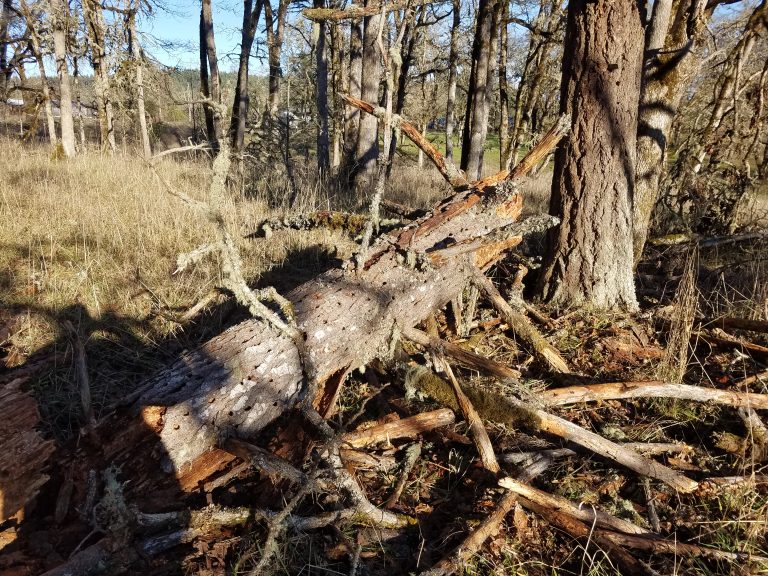
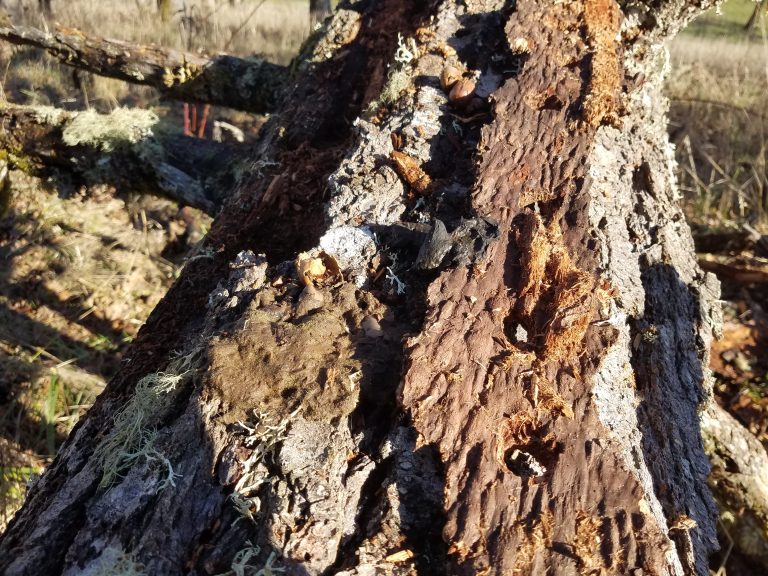
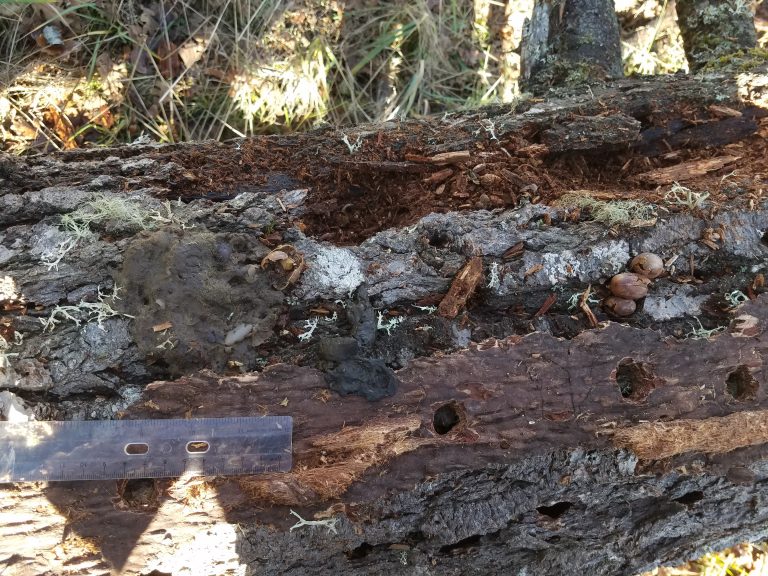
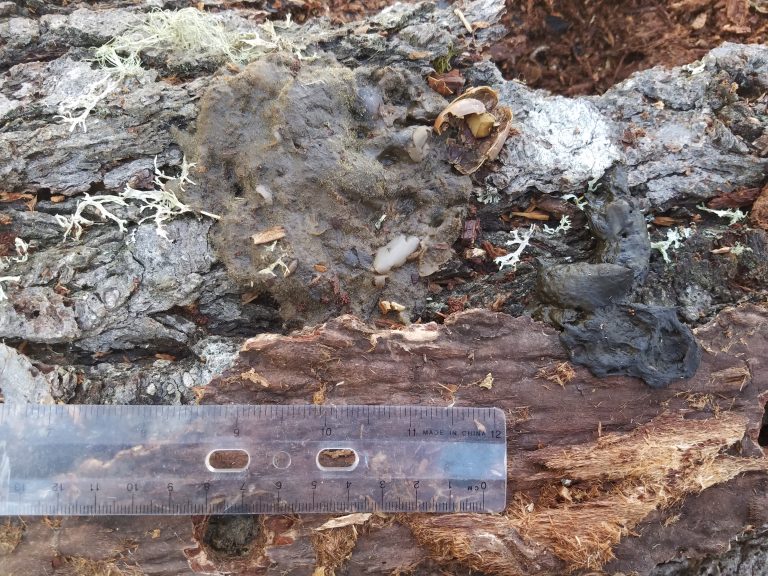
In the following “Day Crew” series of video clips you will see Acorn Woodpecker, Western Gray Squirrel, California Scrub-Jay, Spotted Towhee, and Northern Flicker visiting this log. The clips show the woodpecker, squirrel, and scrub-jay searching the log and/or finding an acorn. The towhee was observed to forage on “crumbs” on the log, as were Dark-eyed Juncos (not in the video). In each clip, watch the behavior of each bird/animal as they search for food, or find an acorn and take off with it or try to eat it.
The above video is a compilation of 17 short clips over the course of six days.
In the following “Raccoon Series” set of video clips, one, then two Common Raccoons are seen feeling around and digging in pockets and crevices of the down tree, finding and chewing on acorns, and sloppily dropping pieces of acorn while chewing. I later observed small birds (Spotted Towhee and Dark-eyed Junco) foraging on these crumbs.
The above video is a compilation of 14 short clips over the course of two nights.
In the following “Gray Fox Series” of video clips, the fox is observed to deposit scat behind the favored limb, sniff many locations, and rub mark on the right end of the log. I did not observe the fox obtaining acorns, but they do eat acorns and in one clip the fox can be seen inspecting a hole in the bark (not visible from this angle).
The above video is a compilation of 10 short clips over the course of three different nights.
An interesting occurrence I wasn’t expecting was the pattern of perch preference by some of the local birds and Western Gray Squirrel. In the following series of photos you will see an Acorn Woodpecker, Western Gray Squirrel, California Scrub-Jay, and Northern Flicker, all using the same broken branch on this down tree. I have quite a few photos of these species using that one particular broken branch. You’ll notice there are other possible branch perches, most noticeably the one just a couple feet to the right, but no other branches are ever used as perches. What is so special about that specific branch? And why did both the Raccoon and Gray Fox scat mark very nearby this branch? Or is the juxtaposition of the scat mark location just a coincidence?

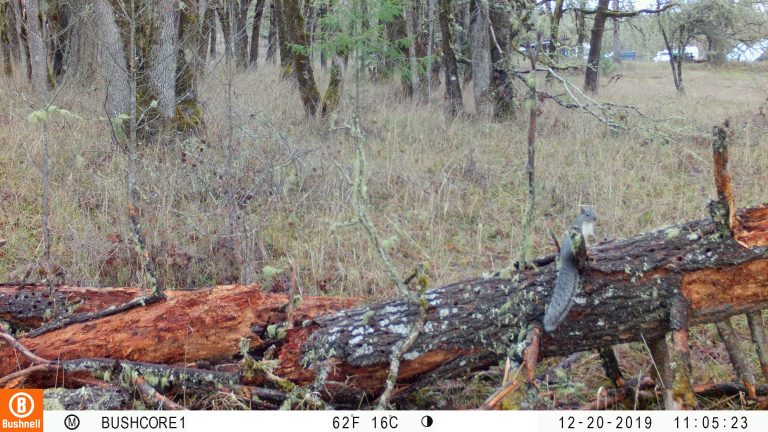

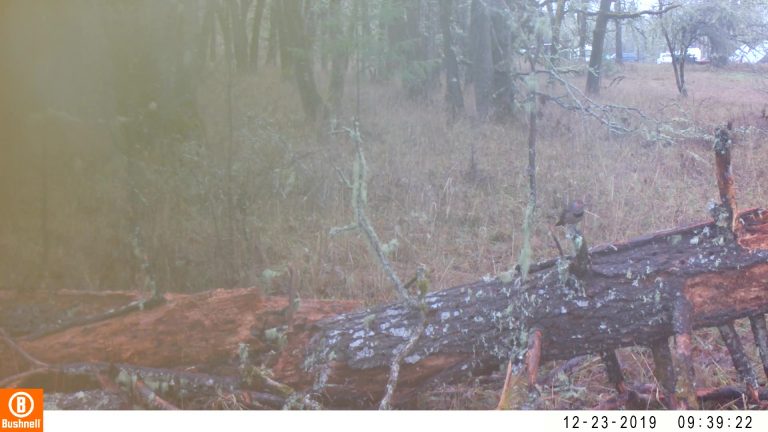
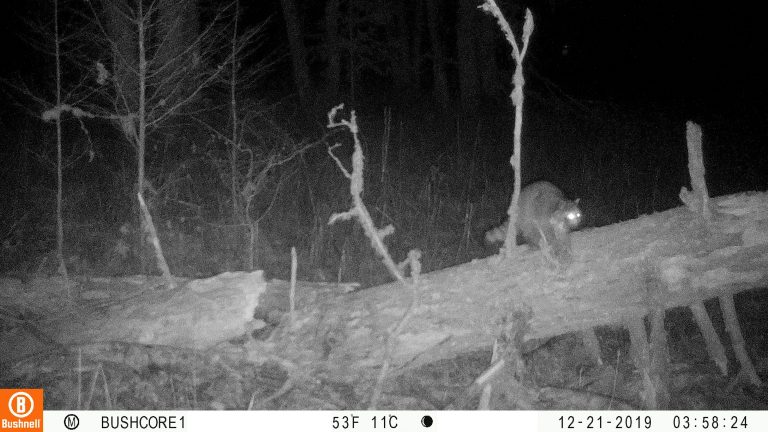
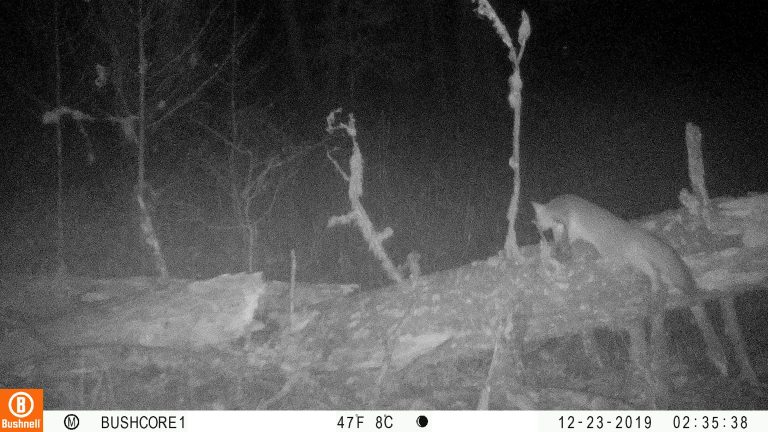
One species and/or one change in an environment can have a subsequent effect on many other species.

This Post Has 10 Comments
Danke
That’s a good question/point Alan. There was the Western Gray Squirrel of course, but you’re thinking rats and mice. Both occur here, but I have not seen either foraging on the acorns at this location. The Rattus species here tend to stay near buildings. Deer Mice should be everywhere, but perhaps they are too small to trigger the trail cam at that distance, or being rather small perhaps they have stayed in the grass below the log where there are plenty of crumbs. Same with the voles. Good question.
Thanks Cindy! I’ve been enjoying imagining Grizzlies wandering around my property tearing up logs and snags! 🙂
Great series, Matt. Thanks for posting.
What a cool set of images! It’s neat to see how many benefit from the woodpeckers ‘saving for a rainy day’. ! 🙂
Thanks for sharing! Fun pics and video. I especially love the gray fox. Such a beautiful critter.
I meant to comment on Acorn Woodpecker granary trees in Matt’s previous blog topic (granary tree at River Forks Park). For anyone who doesn’t know the South Umpqua bike and walking path from downtown Roseburg along the north side of the river to Stewart Park, there are Acorn Woodpeckers active every day in the oak woodland between I-5 and the south entrance road to the Veterans Administration. Mixed among the oaks are Ponderosa Pine and at least one is a granary tree.
That brings up a thought…. This spot is within my deer fence, so no deer can access this down granary. I bet if it were open to deer we would have seen deer here too! Thanks for the note!
Thanks for posting this story, Matt! It’s fascinating! (Though the California Scrub-jays could be taught a thing or 2 about social distancing!)
Very cool, Matt! Thanks for the post, and for posting in on OBOL.